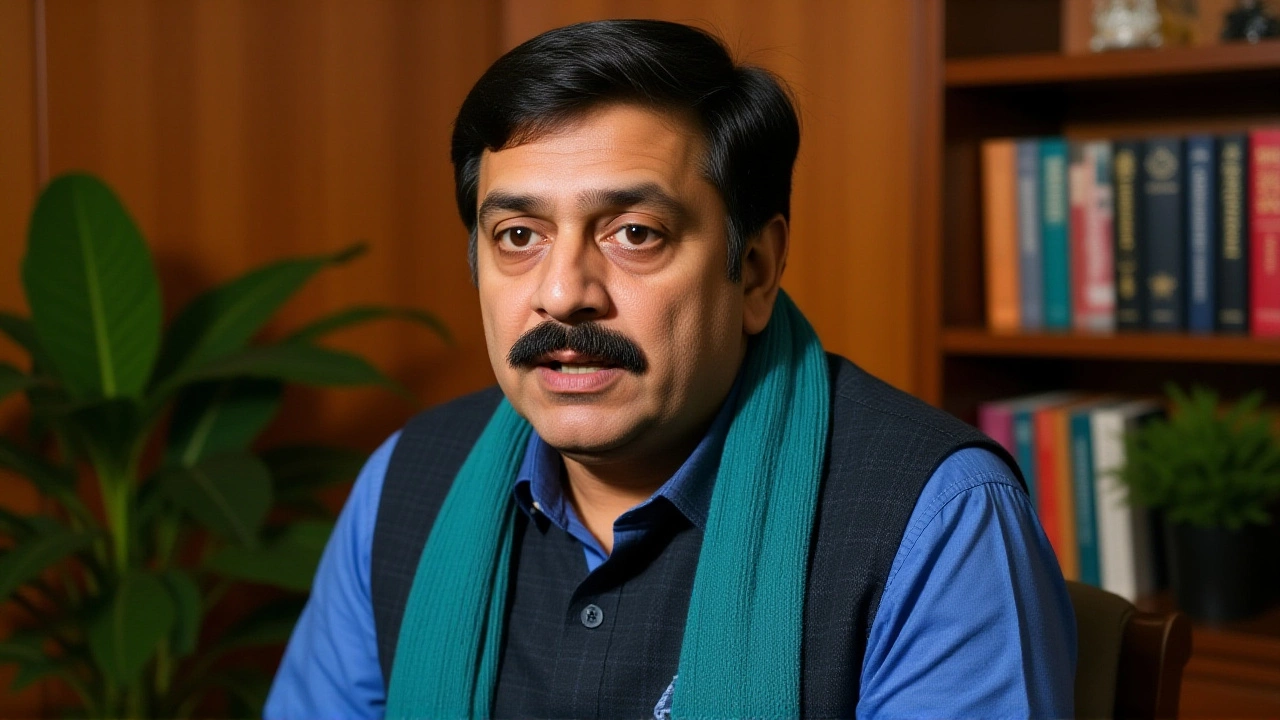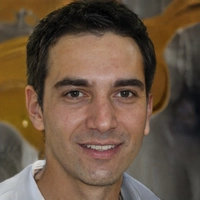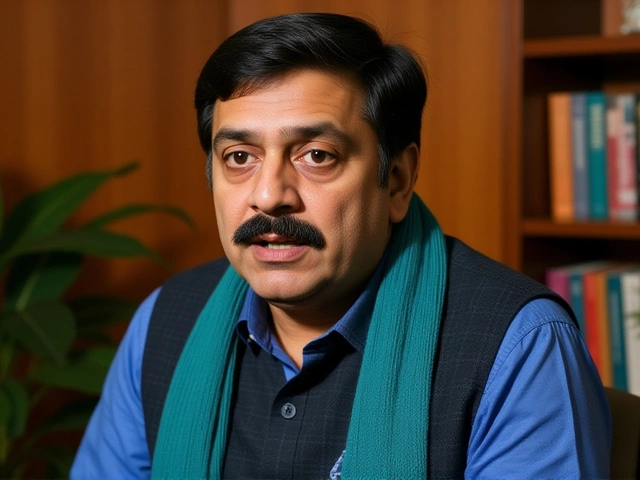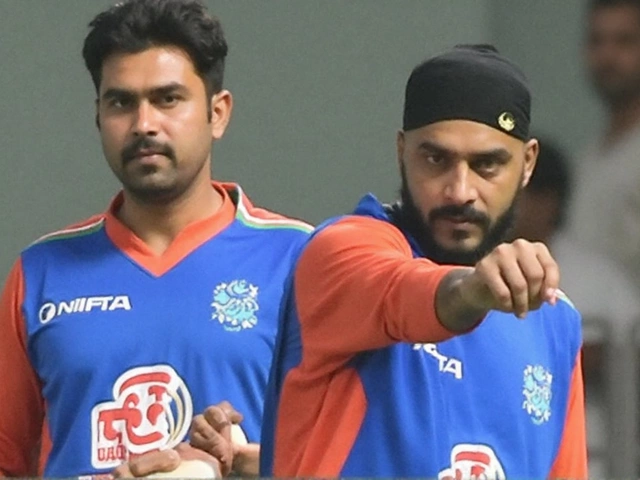When Shashi Tharoor, Member of Parliament and former diplomat took to X on 13 October 2025, he did not mince words about India’s diplomatic choice at the Gaza peace summitSharm El‑Sheikh, Egypt. He slammed the decision of Narendra Modi, Prime Minister of India to stay in New Delhi, noting that the summit was co‑chaired by Donald Trump, President of the United States and Abdel Fattah al‑Sisi, President of Egypt. Among the 20‑plus heads of state present were Mahmoud Abbas, President of the State of Palestine and Keir Starmer, Prime Minister of the United Kingdom. India was represented only by Kirti Vardhan Singh, Minister of State for External Affairs. Tharoor framed the question as a clash between “strategic restraint” and a “missed opportunity”, warning that India’s muted voice could diminish its influence in shaping post‑war reconstruction.
Background to the Gaza Peace Summit
The summit was convened after more than two years of relentless fighting between Israel and Hamas, a conflict that claimed roughly 9,800 lives and displaced over 1.5 million people, according to United Nations estimates. By October 2025, a fragile cease‑fire brokered by the United Nations and backed by the United States had held, creating a window for diplomatic engagement. Egyptian President al‑Sisi, leveraging his country’s longstanding role as a mediator, invited leaders from the United States, Europe, the Arab League and the broader international community to Sharm El‑Sheikh to discuss reconstruction, humanitarian aid and a roadmap toward a lasting political settlement.
Key agenda items included:
- Rebuilding critical infrastructure in Gaza – hospitals, water plants and power grids.
- Establishing a joint donor fund expected to raise $2.3 billion.
- Negotiating a security framework to prevent a resurgence of hostilities.
- Addressing the political status of Hamas within any future peace architecture.
India’s Diplomatic Calculus
New Delhi’s decision to send only a junior minister rather than Prime Minister Modi has been interpreted through several lenses. Official spokespeople from the Ministry of External Affairs (MEA) argued that the meeting’s focus on reconstruction — an area where India’s expertise in infrastructure and renewable energy could be valuable — did not demand the presence of the head of government. They also cited the busy schedule surrounding India’s G20 summit in New Delhi that week.
However, political analysts point out that India has traditionally taken a proactive stance in Middle‑East peace initiatives, dating back to its role in the 1978 Camp David Accords and the 1994 Israel‑Jordan peace treaty. “Missing a summit co‑chaired by the U.S. and Egypt sends a muted signal,” says Rohit Kumar, Senior Fellow at the Observer Research Foundation. “In an era where India is courting strategic autonomy, visible engagement remains a cornerstone of credibility.”
Furthermore, trade data from 2024 show that India’s bilateral commerce with Israel grew by 12 % to $4.9 billion, while its ties with the Palestinian Authority remain modest but symbolically important. The summit offered a platform to deepen economic cooperation that could complement India’s broader “Connect Central Asia” strategy.
Reactions from Indian Political Circles
The criticism from Tharoor was echoed by several opposition figures who argue that the government’s foreign‑policy approach has become overly cautious. In Parliament on 14 October, BJP MP Vinod Sonkar defended the decision, stating, “Prime Minister Modi’s priorities are domestic development and strategic stability; a brief diplomatic engagement would not outweigh our internal agenda.”
Conversely, Congress leader Sanjay Raut demanded a “clear statement of intent” from the government, noting that India’s abstention could be exploited by regional rivals seeking to position themselves as the sole mediators.
Public opinion, gauged by a post‑summit poll conducted by the Hindustan Times, showed that 57 % of respondents felt India should have sent a higher‑ranking official, while 31 % approved the ministerial representation.
International Response to India’s Representation
Outside India, the reaction was mixed. The United States press release praised the “constructive participation” of Minister Singh, highlighting India’s commitment to humanitarian aid. Yet journalists in London noted the stark contrast with the presence of Prime Minister Starmer, who used the platform to announce a £150 million donation to Gaza’s reconstruction fund.
Egyptian foreign ministry spokesperson Laila El‑Said remarked, “We welcome all contributions, big or small, and appreciate India’s involvement through its capable delegation.” The tone, however, hinted at an undercurrent of disappointment – a sentiment echoed by a senior UN official who told Al Jazeera, “When a country of India’s stature limits its representation, it narrows the diversity of perspectives in critical negotiations.”
What the Summit Aimed to Achieve and Next Steps
Despite the diplomatic hiccup, the summit produced several concrete outcomes. The joint donor fund was inaugurated with seed contributions from the United States ($500 million), the European Union ($300 million) and Gulf states ($200 million). A technical working group, co‑chaired by the United Kingdom and Japan, was tasked with overseeing the reconstruction of Gaza’s water infrastructure, a sector devastated by the conflict.
India, through the Ministry of External Affairs, pledged $20 million in humanitarian aid, earmarked for medical supplies and renewable‑energy micro‑grids in refugee camps. Minister Singh announced that Indian engineering firms would submit proposals for rebuilding power stations, positioning India as a potential contractor in the post‑war economy.
Looking ahead, the next round of talks is slated for March 2026 in Doha, Qatar, where leaders will review progress on the donor fund and discuss the political status of Hamas. Analysts suggest that India’s future involvement will hinge on how effectively it can translate its financial pledges into on‑the‑ground projects.
Key Facts
- Date of summit: 13 October 2025.
- Sharm El‑Sheikh, Egypt.
- Donald Trump and Abdel Fattah al‑Sisi.
- Kirti Vardhan Singh, Minister of State for External Affairs.
Frequently Asked Questions
Why did Prime Minister Narendra Modi skip the Gaza peace summit?
The Indian government cited a packed domestic agenda, including the upcoming G20 summit, and argued that the summit’s focus on reconstruction could be handled by the Ministry of External Affairs. Critics say the decision reflects a cautious foreign‑policy stance rather than logistical constraints.
What role did Kirti Vardhan Singh play at the summit?
Singh led India’s delegation, delivering a statement of solidarity, announcing a $20 million humanitarian pledge, and offering Indian engineering expertise for Gaza’s power‑grid reconstruction.
How did other world leaders react to India’s limited representation?
U.S. officials praised India’s constructive participation, while media in the UK and Egypt noted the contrast with higher‑ranking delegations, suggesting the move could marginalize India’s influence in post‑war negotiations.
What were the main outcomes of the Gaza peace summit?
The summit launched a $2.3 billion donor fund, established a technical working group for water‑infrastructure reconstruction, and secured commitments from the U.S., EU, Gulf states and India for humanitarian aid and future rebuilding contracts.
What’s next for the peace process after the Sharm El‑Sheikh summit?
A follow‑up meeting is scheduled for March 2026 in Doha, Qatar, where leaders will assess donor‑fund disbursements, monitor reconstruction progress, and discuss the political integration of Hamas into any lasting peace framework.








Write a comment